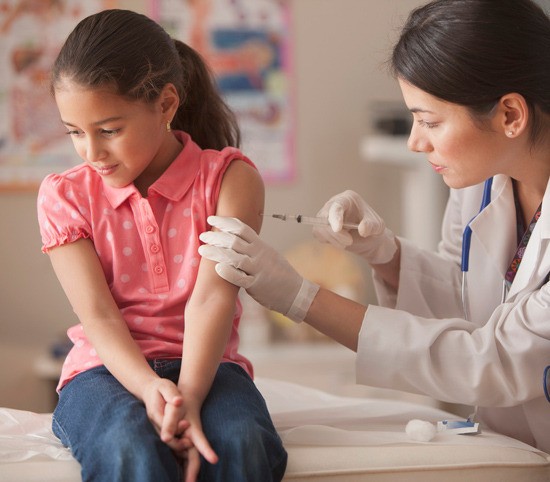Starting this fall, area high school students must have received their two doses of chickenpox vaccine before they start classes.
This will mark the end of a nine-year Washington State Department of Health chickenpox vaccine implementation plan that started requiring kindergarten students to get their second chickenpox vaccine dose in the 2008-2009 school year.
Every year, the next grade level was required to get their two doses of chickenpox vaccine before starting school until the 2015-2016 school year, when 7th and 8th graders were required to get their vaccines, said DOH spokesman Dave Johnson.
Now it’s the big kids’ turn, and from now on, students at all grade levels must have their two doses of chickenpox vaccine before starting classes.
Johnson said its difficult for the DOH to tell if the increase in vaccines reduces the number of Washington kids that catch chickenpox, especially with the new vaccine requirements.
“However, this requirement is based on national recommendations that take into account not only the spread of chickenpox but the increased risk of shingles (herpes zoster) for adults who had chickenpox as children,” Johnson wrote in an email interview. “So, there are long term impacts of contracting chickenpox that must be taken into account.”
Students are not required to be vaccinated if they already had two doses of the vaccine, have had chickenpox in the past, or have had a blood test showing they are immune.
“We are strongly encouraging parents to get students of all ages into a provider’s office as soon as possible to get up to date on their required vaccines and avoid a rush before school,” Johnson concluded.
Approximately 40 percent of current Sumner School District high school students do not have their second dose of the vaccine, said Communications Director Sarah Gillespie, although most already have the first dose.
White River School District nurse Denyse Mueller estimates approximately 300 students will need to get their second dose of the vaccine to attend school.
Mueller said there will be an opportunity for students to get their vaccine during school March 23, given parents fill out the appropriate paperwork.
Enumclaw School District nurse Sonja Bookter estimated approximately 325 students at EHS will need to update their vaccine as well.
History of chickenpox
According to the CDC, chickenpox used to be very common in the US, and an average of four million people caught the disease every year in the 90s.
The chickenpox vaccine became available in 1995 and by 2010, 90 percent of children from 1.5 to 3 years of age had already received one dose of the vaccine.
Cases of chickenpox declined 45 percent from 2000 – 2005, and another 77 percent between 2006 – 2010 after another dose of the vaccine was recommended.
Eventually, infants that weren’t able to be vaccinated started to feel the effects of such widespread vaccination; from 1995 to 2008, cases of chickenpox among infants less than a 1.5 years of age dropped 90 percent.
The CDC estimates more than 3.5 million cases of chickenpox are prevented each year because of the vaccine, and studies show children vaccinated against chickenpox have a lower risk of developing shingles later in life.
Herpes zoster, also known as shingles, is caused by the reactivation of same virus that causes chickenpox, known to health professionals as the varicella-zoster virus (VZV).
Anyone who has already been exposed to VZV, even in the form of the vaccine, can develop shingles later in life, especially after 50 years of age.
Children who are vaccinated against chickenpox are less likely to develop shingles because the VZV used in the vaccine is a weakened version of the wild VZV virus, which is what most older adults (40 years old when the vaccine was introduced in 1995) were exposed to.
The CDC reports one in three people in the US will develop shingles in their lifetime. Approximately 96 shingles-related deaths are reported every year.
Unlike chickenpox trends, which have been declining since the introduction of the vaccine, shingles trends are increasing for unknown reasons.
One theory was the exposure to chickenpox as a child increased a person’s immunity to VZV later in life. Now with the increase in vaccines, less children are exposed to chicken pox and that immunity is not developed.
The CDC now believes this scenario is unlikely, because shingles rates started increasing before the chickenpox vaccine was introduced and did not increase faster as vaccinations trends increased over the years.
And while vaccine rates for chickenpox are high, shingles vaccine rates are much lower.
In 2010, it was reported 15.8 percent of adults over 60 received the shingles vaccine, compared to the 90 percent chickenpox vaccine rate in 1.5 to 17 year old children in 2010.
In 2012, the shingles vaccine rate increased to 20 percent.
Free vaccinations
According to the DOH, parents can get free vaccines for all kids up to 19 years old through health care providers participating in the state’s Childhood Vaccine Program.
However, participating providers may charge for the office visit and an administration fee to give the vaccine.
People who can’t afford the administration fee can ask for it to be waived.


